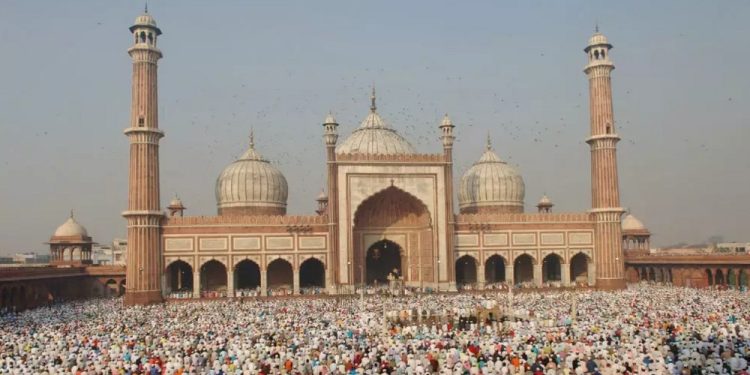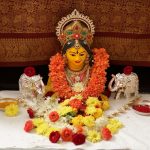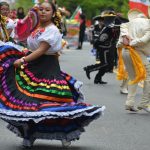
Eid al-Fitr (End of Ramadan)
Eid al-Fitr is a Muslim holiday that celebrates and commemorates the end of the fasting month of Ramadan. This holiday is known as Eid, Lesser Eid, or Festival of Breaking the Fast, and it’s observed by Muslims all over the world. Although the Muslim faith has a variety of different holidays observed throughout the year, this holiday is one of the two Eids observed by the entire worldwide Muslim community.
Eid al-Fitr marks the end of Ramadan, and Eid al-Adha happens at the end of the yearly pilgrimage season. Because the Islamic calendar isn’t a solar calendar but a lunar one, the day on which this holiday falls can vary according to the year. This is compounded by the fact that the 12-month lunar year is 11 days shorter than the Gregorian calendar.
Ramadan & The Significance of Eid al-Fitr
Ramadan falls during the ninth month of the Islamic calendar, and almost all Muslims are required to fast from dawn to dusk. Muslims are also required to abstain from drinking, smoking, and sexual activity during daylight hours. This month is when the Prophet Muhammad received the teachings of the Quran.
Fasting during this month is one of the basic principles of the Islamic faith—principles that are known as the Five Pillars. Ramadan requires people to examine and contemplate their lives and forces them to do so by changing their normal daily routine. Feeling hunger or thirst during Ramadan gives a person great appreciation for what they already have and heightens their awareness of the suffering of the poor.
After a month of self-control, devotion, and dedicated prayer, Muslims celebrate what they have just accomplished with the Festival of Breaking the Fast—the beginning of this holiday. This holiday is usually a national one in countries with large Muslim populations. Celebrations for this holiday typically take place over a three-day period, which is a day shorter than Eid al-Adha.
This makes this holiday a Smaller Eid or lesser festival and is usually considered to be the less important of the two Eids. During Eid al-Fitr celebrations, Muslims greet each other with the greeting “Eid Mubarak,” which means “have a blessed Eid.” People also take part in special prayers in the morning and gather with friends and family for special meals. Another custom during this holiday is for gifts to be given to children.
The History Of Eid al-Fitr
The origins of this holiday can be traced back to the Prophet Muhammad. According to some, this festival began after Muhammad migrated from Mecca and was begun in Medina. According to a companion of the Islamic prophet named Anas, when Muhammad went to Medina, he discovered that people were celebrating two days on which they entertained themselves. When Muhammad saw this, he said that Allah had given them two days of festivity, and these days were Eid al-Fitr and Eid al-Adha.
Customs, Traditions, And Celebrations For Eid al-Fitr
According to tradition, each family is expected to donate to the poor and those who are less fortunate towards the end of Ramadan. This practice is to ensure that this holiday isn’t just enjoyed by those who are privileged enough to afford it but by everyone. On a typical day during the celebration, a Muslim will rise before sunrise to offer their pre-sunrise prayer known as Salatul Fajr.
They will then attend to their personal cleanliness rituals such as brushing their teeth or showering, as instructed by the Prophet Muhammad. Muslims are expected to also refrain from fasting and to head to Eid salaat early. Muslims are also expected to pay people the proper greetings. When all of their obligations have been fulfilled, Muslims will then visit with friends and families to give them best wishes and to give gifts to children.
Eid al-Fitr Foods
Another thing that people do on this holiday is to enjoy meals with their loved ones. Although these dishes can differ from one country to another, we thought we’d list some of the more common dishes that are served during this celebration.
In Bangladesh, Pakistan, Iran, Brunei, India, Malaysia, and parts of the Arab world, sweet dishes such as Boeber (an Indian pudding) are enjoyed. Balaleet is another dish commonly enjoyed in the Arab states of the Persian Gulf. Balaleet is made using vermicelli that has been sweetened with sugar, rose water, cardamom, and saffron. It’s usually served with an egg omelet. Sometimes this dish is served with potatoes or sautéed onions.
In Southern Asia, dishes such as Gulab Jamun, chom choms, barfis, and rasmalai are often served. People not only consume these dishes at home, but these dishes are also brought to other people’s homes. In Turkey, sweet types of pastries are consumed, such as Baklava.
In The United States
In New York City, street cleaning regulations are usually suspended for Eid al-Fitr. City public schools also close on Eid and have done so since 2016. However, in other U.S. states that have smaller Muslim populations, schools normally don’t close.
U.S Celebrations During COVID-19
In parts of the U.S. during the COVID-19 pandemic, Muslims celebrated this holy day from their cars using a drive-through method of celebration. Cars showed up and would travel from one table filled with toys and foods, and people were greeted with “hello Habib!” an Arabic word for “beloved.”
Since this holiday is often a festive time, many people participating in this drive-thru celebration wore festive costumes. This was a way to keep the tradition alive in the memory of the children and allow them to observe the holiday even during the pandemic.








